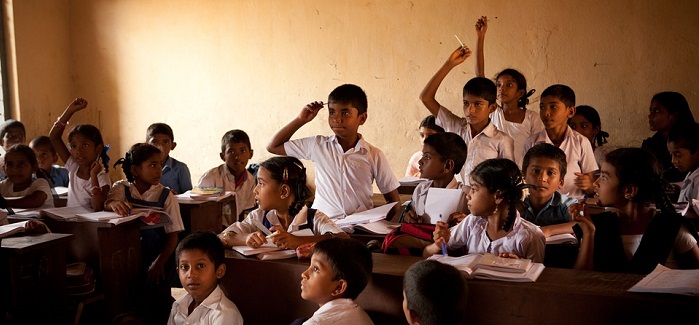
NAS 2017: A Much-Needed Move
13 November 2017
The focus of education policymakers on outcomes, especially learning outcomes, is steadily rising. This is the first blog in a blog series to discuss paradigm shifts in the field of assessments in India’s public education system.
Today (13 November 2017) is a landmark day for India’s education sector as the largest ever learning assessment survey of students, formally known as the National Achievement Survey (NAS), is being rolled out across around 700 districts of the country. The move marks a paradigm shift in the public education policy of the country with the government attempting to focus on learning outcomes.
Why is NAS 2017 important?
Conducted by the National Council of Educational Research and Training (NCERT), NAS 2017 will cover a sample of nearly 3.6 million children from 120,000 schools spread across all districts of India. Sample coverage of this magnitude thus makes it the largest ever sample survey conducted by the Indian government till date.
More importantly, the need for NAS 2017 has emerged from calls for a shift in the government’s role in education – away from the provision of school related inputs to improving the quality of learning. Measuring learning on a regular basis is the first step toward achieving this shift, and reflects the Ministry of Human Resource Development’s (MHRD) emphasis on ‘Learning for All’, not just ‘Education for All’.
NAS 2017 is unique in a number of ways. First, this is going to be an annual exercise starting from 2017 which is the first step in ensuring regular government monitoring of learning levels at the sub-national level. Second, learning level assessments will be done for three grades in the elementary level (III, V and VIII) every year on the same day unlike the previous rounds of NAS where a particular round used to focus on a single grade. Third, the sample of schools/students have been selected in such a manner that the findings will be representative at the district level, which will result in generation of district level reports on learning assessments. Fourth, NAS 2017 aims to ensure near real time data access. Answers to the tests will be captured through OMR (Optical Mark Recognition) sheets, which will be scanned and data will be captured in much lesser time. In fact, NCERT is expecting to generate district report cards within a month from now. Lastly, to derive an understanding of factors influencing learning, the survey is also going to capture some background indicators on students, teachers and schools through three questionnaires – Pupil Questionnaire (PQ), Teacher Questionnaire (TQ) and School Questionnaire (SQ).
How is the government planning to use NAS findings?
While earlier rounds of NAS broadly reflected learning levels for a state as whole, they did not provide enough ground level insights that could be utilised for diagnostic and feedback purposes to the local bureaucracy. As a result, these overall findings were not used for bringing improvement in the teaching-learning processes.This is precisely why NAS has been modified in 2017. NCERT has specifically mentioned in its guidelines that NAS findings will now be disseminated to the last mile (schools within each district) and different policy interventions would be taken up to improve the learning level of students, based on the NAS findings. To this end, NCERT has already conducted a national level workshop to finalise the guidelines for communicating the findings to the district level, and to identify ways to incorporate the required interventions in the annual district and state level education planning processes.
It is in this sense that NAS has the potential to move beyond being just a policy tool to also becoming a tool for accountability. Considering the role of ‘reliable, relevant, and regular’ data in impacting policies, there is thus hope that the NAS 2017 will be a game changer. However, for this to become reality, what must be guarded against is the danger that NAS is just another huge data collection exercise of the government.
For now, it is premature to know the exact impact of the NAS measures. However, in order to ensure its success,the government should put emphasis on making the NAS results accessible to the general public by focusing on increasing public awareness and publishing the findings and ideally also the raw data through different media (not only through an online portal as is the case till now). This will help ensure that the findings become a key information base for parents and the community members for demanding pedagogical accountability from education providers and the government.
In upcoming blogs, my colleagues Vincy and Taanya will discuss other recent developments in the field of assessments in education.





